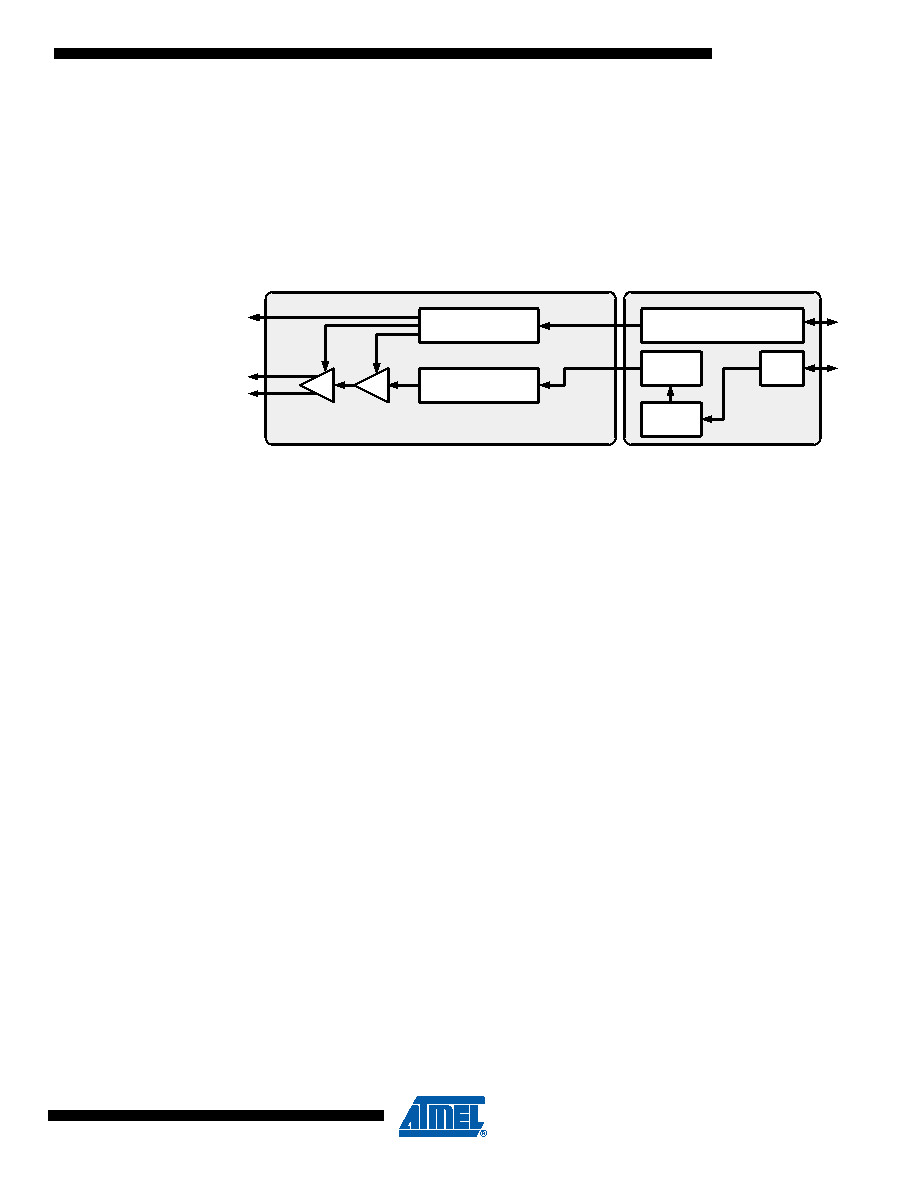- 您現(xiàn)在的位置:買賣IC網(wǎng) > PDF目錄25635 > MQ80C32E-30/883 (TEMIC SEMICONDUCTORS) 8-BIT, 30 MHz, MICROCONTROLLER, CQFP44 PDF資料下載
參數(shù)資料
| 型號: | MQ80C32E-30/883 |
| 廠商: | TEMIC SEMICONDUCTORS |
| 元件分類: | 微控制器/微處理器 |
| 英文描述: | 8-BIT, 30 MHz, MICROCONTROLLER, CQFP44 |
| 文件頁數(shù): | 7/198頁 |
| 文件大小: | 4822K |
| 代理商: | MQ80C32E-30/883 |
第1頁第2頁第3頁第4頁第5頁第6頁當(dāng)前第7頁第8頁第9頁第10頁第11頁第12頁第13頁第14頁第15頁第16頁第17頁第18頁第19頁第20頁第21頁第22頁第23頁第24頁第25頁第26頁第27頁第28頁第29頁第30頁第31頁第32頁第33頁第34頁第35頁第36頁第37頁第38頁第39頁第40頁第41頁第42頁第43頁第44頁第45頁第46頁第47頁第48頁第49頁第50頁第51頁第52頁第53頁第54頁第55頁第56頁第57頁第58頁第59頁第60頁第61頁第62頁第63頁第64頁第65頁第66頁第67頁第68頁第69頁第70頁第71頁第72頁第73頁第74頁第75頁第76頁第77頁第78頁第79頁第80頁第81頁第82頁第83頁第84頁第85頁第86頁第87頁第88頁第89頁第90頁第91頁第92頁第93頁第94頁第95頁第96頁第97頁第98頁第99頁第100頁第101頁第102頁第103頁第104頁第105頁第106頁第107頁第108頁第109頁第110頁第111頁第112頁第113頁第114頁第115頁第116頁第117頁第118頁第119頁第120頁第121頁第122頁第123頁第124頁第125頁第126頁第127頁第128頁第129頁第130頁第131頁第132頁第133頁第134頁第135頁第136頁第137頁第138頁第139頁第140頁第141頁第142頁第143頁第144頁第145頁第146頁第147頁第148頁第149頁第150頁第151頁第152頁第153頁第154頁第155頁第156頁第157頁第158頁第159頁第160頁第161頁第162頁第163頁第164頁第165頁第166頁第167頁第168頁第169頁第170頁第171頁第172頁第173頁第174頁第175頁第176頁第177頁第178頁第179頁第180頁第181頁第182頁第183頁第184頁第185頁第186頁第187頁第188頁第189頁第190頁第191頁第192頁第193頁第194頁第195頁第196頁第197頁第198頁

104
8111C–MCU Wireless–09/09
AT86RF231
9.2
Transmitter (TX)
9.2.1
Overview
The AT86RF231 transmitter consists of a digital base band processor (TX BBP) and an analog
radio front end, see Figure 9-2 on page 104.
Figure 9-2.
Transmitter Block Diagram
The TX BBP reads the frame data from the Frame Buffer and performs the bit-to-symbol and
symbol-to-chip mapping as specified by IEEE 802.15.4 in section 6.5.2. The O-QPSK modula-
tion signal is generated and fed into the analog radio front end.
The fractional-N frequency synthesizer (PLL) converts the baseband transmit signal to the RF
signal, which is amplified by the power amplifier (PA). The PA output is internally connected to
bidirectional differential antenna pins (RFP, RFN), so that no external antenna switch is needed.
9.2.2
Frame Transmit Procedure
The frame transmit procedure including writing PSDU data in the Frame Buffer and initiating a
transmission is described in Section 10.2 “Frame Transmit Procedure” on page 127, Frame
Transmit Procedure.
9.2.3
Configuration
The maximum output power of the transmitter is typically +3 dBm. The output power can be con-
figured via register bits TX_PWR (register 0x05, PHY_TX_PWR). The output power of the
transmitter can be controlled over a range of 20 dB.
A transmission can be started from PLL_ON or TX_ARET_ON state by a rising edge of pin
SLP_TR or by writing TX_START command to register bits TRX_CMD (register 0x02,
TRX_STATE).
9.2.4
TX Power Ramping
To optimize the output power spectral density (PSD), the PA buffer and PA are enabled sequen-
tially. This is illustrated by a timing example using default settings, shown in Figure 9-3 on page
105. In this example the transmission is initiated with the rising edge of pin 11 (SLP_TR). The
radio transceiver state changes from PLL_ON to BUSY_TX. The modulation starts 16 s after
SLP_TR.
PLL – TX Modulation
PA
Ext. RF front-end and
Output Power Control
SPI
I/F
DIG3/4
RFP
RFN
TX Data
Analog Domain
Digital Domain
TX BBP
Frame
Buffer
Control, Registers
SPI
C
I/F
Buf
相關(guān)PDF資料 |
PDF描述 |
|---|---|
| MR80C52CXXX-16/883R | 8-BIT, MROM, 16 MHz, MICROCONTROLLER, CQCC44 |
| MR80C52TXXX-16SB | 8-BIT, MROM, 16 MHz, MICROCONTROLLER, CQCC44 |
| MD83C154TXXX-L16P883D | 8-BIT, MROM, 16 MHz, MICROCONTROLLER, CDIP40 |
| MD83C154XXX-L16P883D | 8-BIT, MROM, 16 MHz, MICROCONTROLLER, CDIP40 |
| MQ80C32E-16SB | 8-BIT, 16 MHz, MICROCONTROLLER, CQFP44 |
相關(guān)代理商/技術(shù)參數(shù) |
參數(shù)描述 |
|---|---|
| MQ82370-20 | 制造商:Rochester Electronics LLC 功能描述:- Bulk |
| MQ8238020 | 制造商:Intel 功能描述:CONTROLLER: OTHER |
| MQ82380-20 | 制造商:Rochester Electronics LLC 功能描述:- Bulk |
| MQ82380-20/R | 制造商:Rochester Electronics LLC 功能描述: |
| MQ82592 | 制造商:Rochester Electronics LLC 功能描述:- Bulk |
發(fā)布緊急采購,3分鐘左右您將得到回復(fù)。